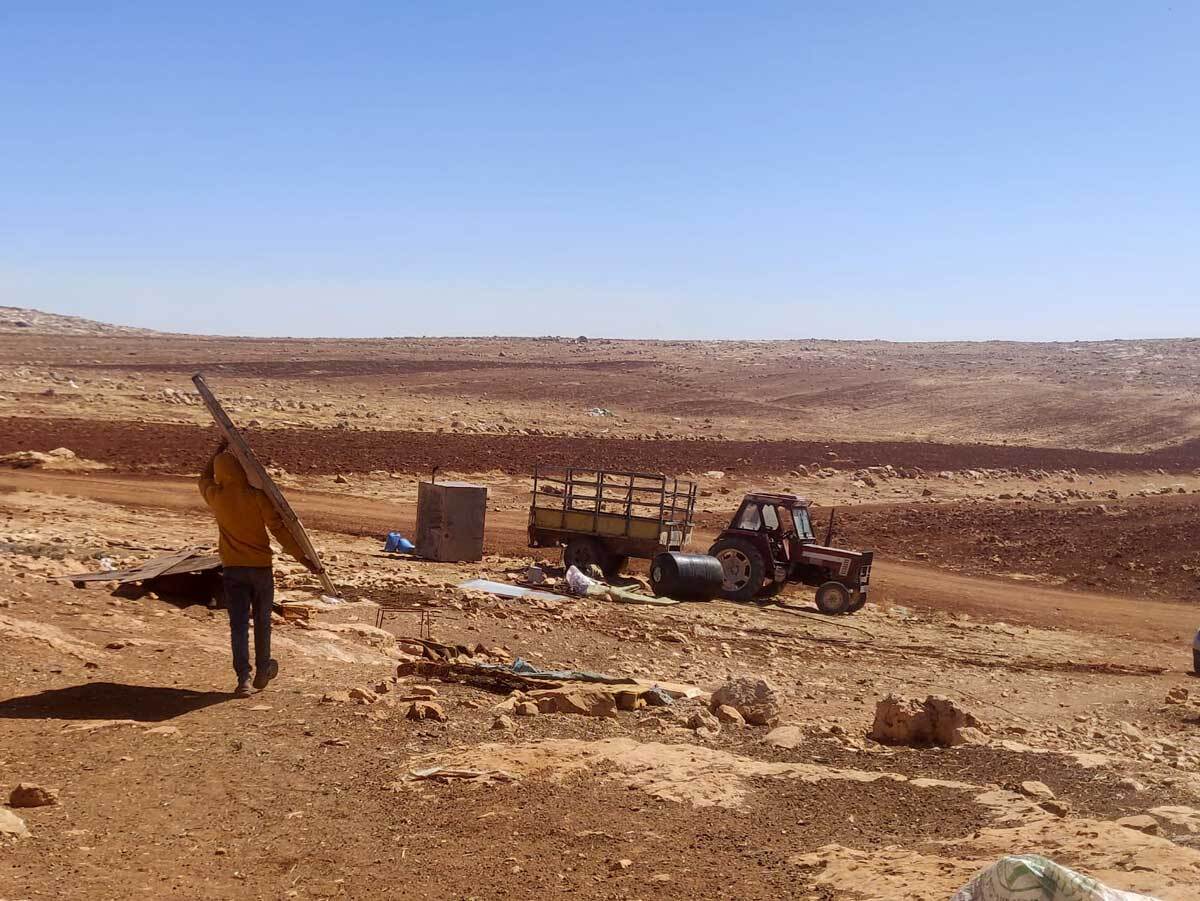Amidst heart-wrenching scenes of families hurriedly gathering their meager belongings, coaxing their children onward, and bidding farewell to their homes and ancestral lands, a profound realization takes root: the haunting echo of the term "Nakba." These poignant moments encapsulate the essence of Ein Samia, Ras a Tin, al-Baq’ah, Khirbet Widady, al-Qabun, and Ras Jraba, Palestinian communities recently subjected to displacement and eviction orders, victims of both state-sanctioned and armed settler violence. For each Palestinian, and for every student of Palestinian history, these distressing sights resound with the agony of the Nakba of 1948.
Yet, this isn't just about an associative link. This heart-wrenching reality is an integral, ongoing aspect of the Nakba. Even as the Nakba persists, and Palestinians continue to be uprooted by force, court orders, or bureaucratic mechanisms since the inception of Israel, the situation has escalated significantly in the West Bank in recent months. Five cases of displacement have emerged in recent months, and more communities stand under the threat of the same fate. This reality unfolds as West Bank settlers are empowered by figures like Ben Gvir and Smotrich, individuals holding considerable sway within Israel's extreme government. The daily torment and intimidation of Palestinian communities aren't mere acts of sadism; they are strategic moves aiming to drive the indigenous population from their lands to facilitate further colonial expansion. This joint endeavor of settler gangs and the state is an urgent matter that can't be ignored. Although currently aimed at isolated shepherd communities, the implications extend far beyond. If left unchecked, countless Palestinians will inevitably face the same dire circumstances.
The international community had turned a blind eye during the Nakba in 1948 and its subsequent disregard for Palestinian refugees' plight and their right to return must not be repeated. Action is imperative before another mass expulsion unfolds. To comprehend the present, we must learn from the past. Even before 1948, Zionist colonizers employed tactics of harassment and intimidation to displace Palestinians from their rightful territories. Amidst contemporary narratives that attempt to dissociate liberal Zionists from settler violence, it's crucial to recognize and dissect these historical parallels and similarities, holding ourselves accountable for this ongoing travesty.
Among recent cases of displacement, the Ras Jraba situation stands out both exceptionally and in connection with other incidents. Why? It's not only due to its location within Israeli territory (the Naqab) but also because its 500 residents hold Israeli citizenship, theoretically guaranteeing them the same rights as their Jewish counterparts. Yet, this isn't the reality they face. The Israeli government's plan to expand Dimona city onto Ras Jraba lands has ordered its residents to vacate. This chilling reality exposes the absence of protection for all Palestinians including those with Israeli citizenship, unmasking the existence of an apartheid regime across the region. The case of Ras Jraba mirrors that of Um al-Hiran, a Bedouin village razed in 2017 to pave the way for an exclusive Jewish settlement. In Ras Jraba, despite irrefutable evidence presented by its people and Israeli NGOs, the Mayor of Dimona falsely claims the village's recent establishment. This systematic erasure is yet another strategic weapon in the colonial regime's arsenal, aimed at eliminating Palestinians' presence from their ancestral lands. This calculated obliteration serves the Israeli agenda of land appropriation and dispossession, encapsulated in discriminatory planning, zoning laws, and building permit regulations designed to suppress Palestinian development and erase their existence from urban areas on both sides of the green line.
On both sides, the state applies a range of tactics, directly or through vigilantes protected by the army or police. Palestinian communities are encircled by settlements, their "security" an excuse for land annexation and expulsion. "Public use" appropriations of land exclude Palestinians, roads are blocked, and access to water denied. Armed militias assault farmers and shepherds, court orders strip residency rights. Though methods may differ, the ultimate goal remains consistent: ethnic cleansing from the land. This "logic of elimination," inherent to colonial regimes, intensifies, fueled by figures like finance minister Smotrich.
Palestinian resistance, advocacy work, and diligent reporting have unveiled the harrowing details of life under this brutality. Yet, to halt this inhumane process, we must perceive the broader context and rationale. Israel has already expelled hundreds of thousands of Palestinians in 1948 and 1967. To stand complicit would only pave the way for history to repeat itself. Some Palestinians endure their second or third forced displacement since 1948—a continuation of the ongoing Nakba. To end this cycle, we must dismantle the colonial structures that perpetuate it. Jewish Israelis can take a different path: rejecting colonialism, acknowledging Palestinian rights, ensuring safety and the right to return, thus forging a more equitable future for all. Those championing justice universally must rally together to shape this future, pledging unwavering support and action to stop the ongoing Nakba.
What can I do?
On the ground: To join protective presence shifts in the most threatened communities, contact Rabbi Arik Asherman through his social media accounts. Ayn Rashash is a community under immediate threat of displacement right now. They need more people.
Elsewhere: Read reports& social media posts from OCHA, Betselem and Naboth Vineyard about the West Bank communities, or Adalah about Ras Jraba. Share and educate yourself and your communities
Organize protests, write to your representatives, do media and social media work to support Palestinian Sumud and stop Zionist colonialism.



